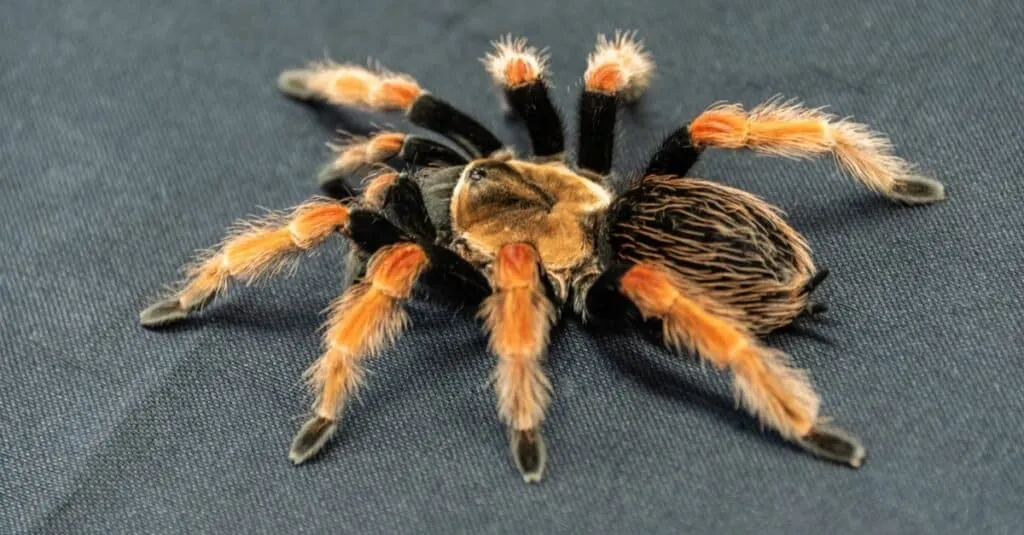What is the Ideal Red Knee Tarantula Diet
The Red Knee Tarantula (Brachypelma hamorii) is a captivating pet, admired for its striking appearance and relatively docile nature. Providing a proper diet is paramount to ensuring your tarantula’s health, longevity, and overall well-being. Understanding the dietary needs of your Red Knee Tarantula is crucial for responsible pet ownership. This guide will delve into the specifics of a balanced diet, covering various food options, supplementation, and feeding practices. From the types of insects to offer to the frequency of feeding, you’ll gain valuable insights to keep your eight-legged friend thriving. Remember that a well-fed tarantula is a happy tarantula, so let’s explore the secrets to a perfect Red Knee Tarantula diet!
Crickets The Staple of a Red Knee Tarantula Diet
Crickets are often the cornerstone of a Red Knee Tarantula’s diet, and for good reason. These readily available insects offer a convenient and nutritious food source. The key is selecting the right crickets and ensuring they’re properly prepared. Crickets should be purchased from reputable pet stores or online suppliers to guarantee they are free from pesticides and parasites. Always observe the crickets before feeding them to your tarantula; ensure they are lively and healthy. Offering a variety of feeders contributes to a more complete diet, preventing nutritional deficiencies and keeping your tarantula engaged.
Nutritional Value of Crickets
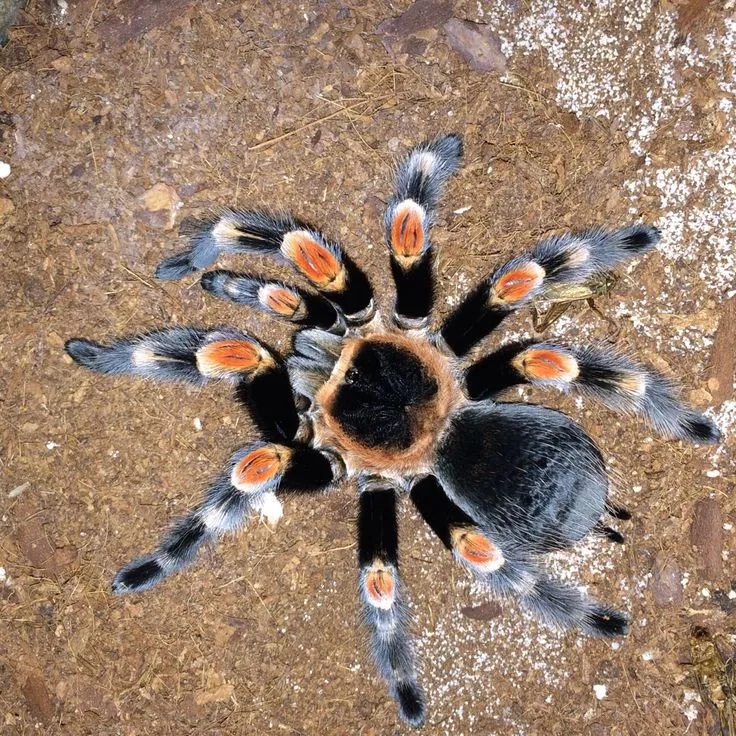
Crickets provide essential nutrients, including protein, which is crucial for growth and maintenance. They also offer chitin, a fiber that aids in digestion, and a moderate amount of fat. However, the nutritional profile can vary based on the cricket’s diet before being fed to your tarantula. Therefore, ‘gut-loading’ your crickets before feeding them to your tarantula is an excellent practice. This involves feeding the crickets nutritious foods like fruits, vegetables, and commercial cricket food, which then transfer these nutrients to your tarantula. By gut-loading, you maximize the nutritional value of each cricket, ensuring your Red Knee Tarantula receives a balanced diet.
How to Prepare Crickets for Feeding
Before introducing crickets to your tarantula’s enclosure, proper preparation is crucial. First, remove any uneaten food or water from the cricket container to prevent them from becoming a source of contamination. Then, take a cricket and gently hold it with tongs to offer it to your tarantula. Never release crickets directly into the enclosure, as they can stress your tarantula and even harm it during molting. For smaller tarantulas, it is wise to remove the cricket’s hind legs to prevent any potential injury during the feeding process. Always monitor your tarantula during feeding and remove uneaten crickets after 24 hours to prevent them from bothering your tarantula or causing stress.
Mealworms Another Great Food Option
Mealworms are another popular and easily accessible food choice for Red Knee Tarantulas. These larvae of the mealworm beetle offer a slightly different nutritional profile than crickets, making them a valuable addition to your tarantula’s diet. They are readily available in most pet stores and can be stored for a decent amount of time. However, they do have a higher fat content than crickets, so they should be offered in moderation as part of a balanced diet. The appeal of mealworms for tarantulas is their ease of capture and relatively slow movement, making them ideal for young or less active tarantulas.
Benefits of Mealworms
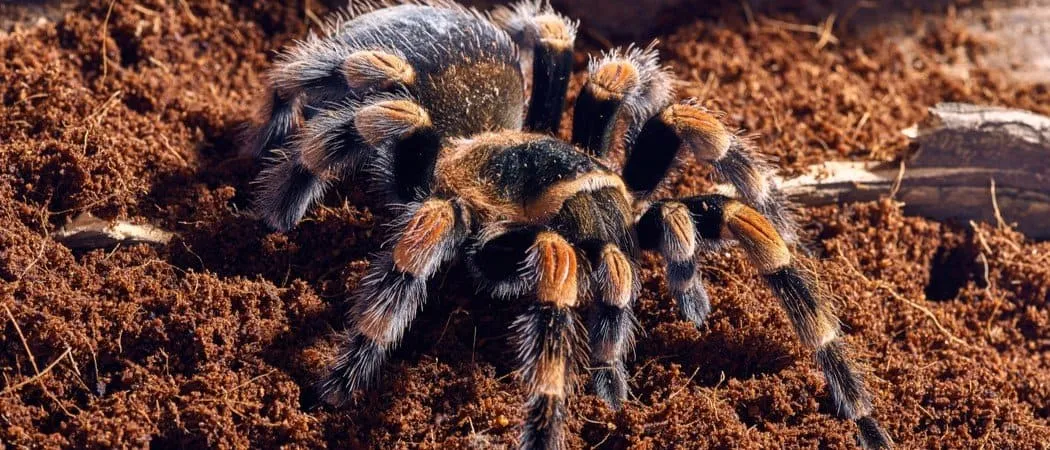
Mealworms provide a good source of protein and are relatively easy to handle and store. Their hard exterior also provides a different texture and feeding experience for the tarantula. Because they are easy to manage, mealworms are also a convenient option for busy keepers. Mealworms can often be sourced in bulk, making them an economical option. Nevertheless, due to their higher fat content, mealworms are best offered as a supplementary food rather than a primary staple. Always ensure the mealworms are healthy and free from any signs of illness before feeding them to your Red Knee Tarantula.
Feeding Mealworms to Your Tarantula
Similar to crickets, offer mealworms individually using tongs to control the feeding process. Start with a few mealworms, and observe if your tarantula is interested. Remove any uneaten mealworms within 24 hours to avoid stress or potential issues. For smaller tarantulas, you may need to crush the mealworm’s head to prevent it from burrowing and potentially bothering the tarantula. Always adjust the number of mealworms based on your tarantula’s size and appetite, paying attention to signs of overfeeding. Varying the diet with mealworms alongside crickets helps ensure your tarantula receives a broad range of nutrients.
Roaches A Protein-Packed Delight
Roaches, such as Dubia roaches or discoid roaches, are considered by many to be the gold standard in tarantula diets. They are a highly nutritious, protein-rich food source with a favorable calcium-to-phosphorus ratio. Roaches offer a lean protein source, minimizing the risk of excessive fat intake. They are also easier to digest than some other insects. However, the availability of roaches may vary depending on your location, and they often require a separate breeding setup. Roaches are less prone to escape, making them a good choice for those who are not keen on escaped feeder insects.
Roach Varieties Suitable for Feeding
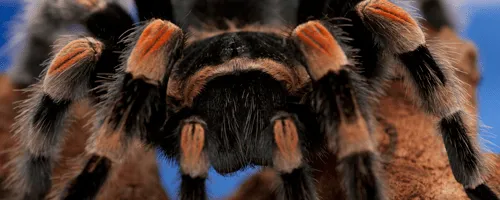
Dubia roaches (Blaptica dubia) and discoid roaches (Blaberus discoidalis) are the most commonly used roach species for tarantula feeding. These roaches are less likely to climb smooth surfaces, making them easier to contain and less likely to escape. Both species are also relatively slow-moving, which reduces the risk of stressing your tarantula. Always source your roaches from a reliable breeder to ensure they are healthy and free from diseases. When selecting roaches, choose a size that is appropriate for your tarantula; the roach should be no larger than the tarantula’s abdomen.
Proper Roach Preparation
Before feeding roaches to your tarantula, it is important to prepare them properly. As with other feeders, you should avoid releasing the roaches directly into the enclosure. Instead, use tongs to offer the roach to your tarantula. For smaller tarantulas, consider crushing the roach’s head to prevent it from burrowing and potentially causing stress. Ensure the roach is active and moving to stimulate your tarantula’s feeding response. Like crickets and mealworms, remove any uneaten roaches within 24 hours. Ensure your roaches are gut-loaded with a healthy diet before feeding them to your tarantula, optimizing their nutritional value.
Supplementing the Red Knee Tarantula Diet
While a varied diet of crickets, mealworms, and roaches can provide a solid nutritional foundation, supplementation can help ensure your Red Knee Tarantula receives all the necessary vitamins and minerals. This is especially important for captive-bred tarantulas, as their diet may not always perfectly replicate what they would eat in the wild. Supplements can help prevent deficiencies and promote overall health and well-being. However, it is important to use supplements judiciously and in moderation, as excessive supplementation can be as detrimental as a deficiency.
Importance of Vitamins and Minerals

Vitamins and minerals play crucial roles in various physiological processes, including growth, molting, and immune function. Calcium is vital for the development of a strong exoskeleton, while vitamins A and D3 support overall health and metabolic processes. Deficiencies in these essential nutrients can lead to problems during molting, such as the tarantula getting stuck in its old exoskeleton, or other health complications. By supplementing your tarantula’s diet, you are proactively safeguarding its health.
Using Calcium and Vitamin Supplements
Calcium and vitamin D3 supplements are readily available in powder form. You can ‘dust’ the feeder insects with these supplements before offering them to your tarantula. Lightly coat the crickets, mealworms, or roaches in the supplement before feeding. It is critical not to over-supplement, as this can lead to health issues. Always follow the manufacturer’s instructions on the supplement’s packaging. Monitor your tarantula for any signs of over-supplementation, such as a distorted or weakened exoskeleton. If you’re unsure about the correct dosage, consult a veterinarian specializing in exotic animals for guidance.
Avoid Overfeeding Your Tarantula
Overfeeding is a common pitfall in tarantula care, and it’s crucial to avoid it. While it may seem like a sign of good care, constantly providing an abundance of food can be detrimental to your Red Knee Tarantula’s health. Overfed tarantulas can become obese, which can lead to a shorter lifespan and difficulties during molting. Understanding your tarantula’s natural feeding habits and growth cycle is essential to providing an appropriate feeding schedule. Overfeeding can also cause them to refuse food, which can be concerning for owners.
Recognizing Signs of Overfeeding
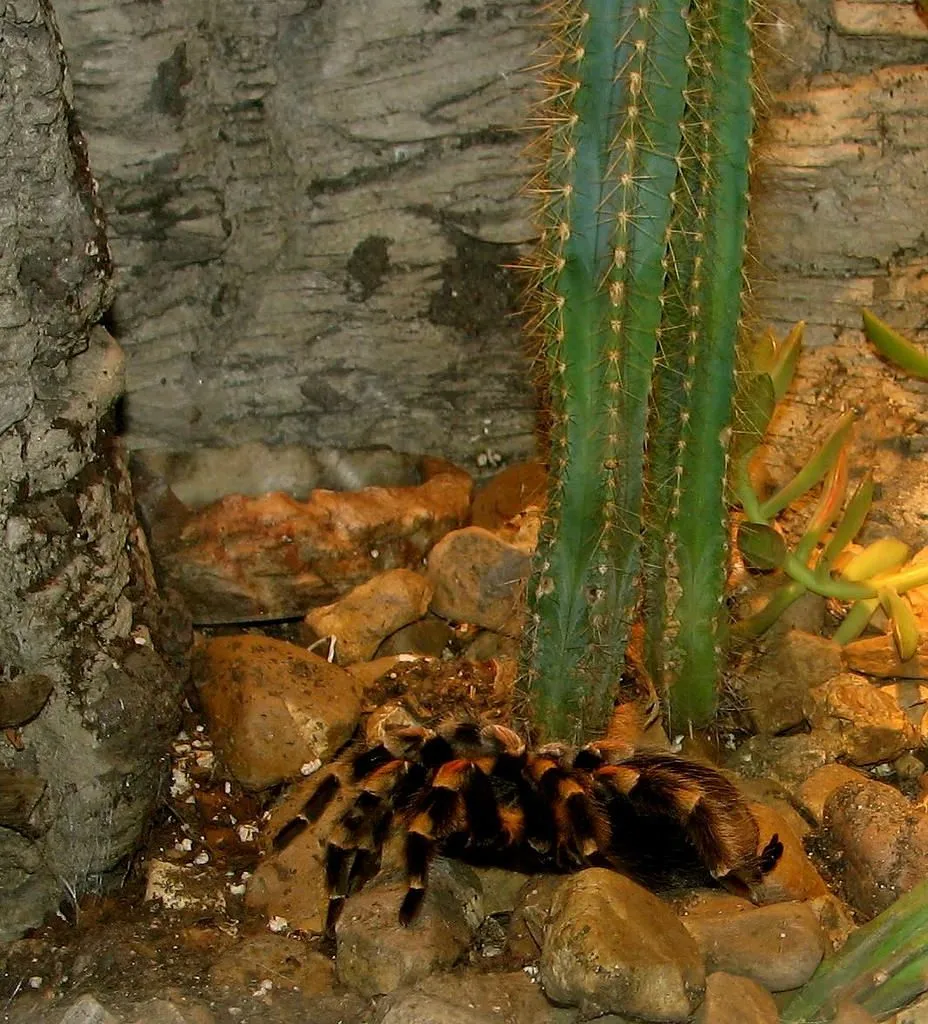
Several signs may indicate that your Red Knee Tarantula is being overfed. A swollen abdomen is a common sign, and the tarantula may appear lethargic and less active than usual. They may also stop eating, refusing food even when hungry. Overfeeding can also affect the tarantula’s molting process, potentially causing them to struggle or even die during molting. Furthermore, an overfed tarantula may have difficulty moving and may show less interest in its environment. Regularly observe your tarantula for these signs, and adjust the feeding schedule accordingly.
Adjusting Feeding Frequency
The feeding frequency for your Red Knee Tarantula will depend on its age and size. Spiderlings and juvenile tarantulas typically require more frequent feedings, often every other day or every three days. As they mature, you can decrease the frequency to once a week or even every two weeks for adult tarantulas. Always adjust the feeding schedule based on your tarantula’s appetite and body condition. Observe your tarantula’s abdomen size; it should be rounded but not overly swollen. If your tarantula is refusing food, it might be an indication that it’s ready to molt. When in doubt, it is always better to err on the side of underfeeding, as tarantulas can survive for extended periods without food.
Water and Hydration
Water is an indispensable element of your Red Knee Tarantula’s well-being. Proper hydration is essential for molting, overall health, and survival. Tarantulas obtain water through the water dish and the moisture in their food. Ensuring an adequate water supply is crucial, as dehydration can lead to several health complications. Understanding the importance of providing clean water and maintaining the appropriate humidity levels is crucial for successful tarantula husbandry. Provide a shallow water dish and regularly replenish it to ensure your tarantula has access to fresh water.
Providing Clean Water
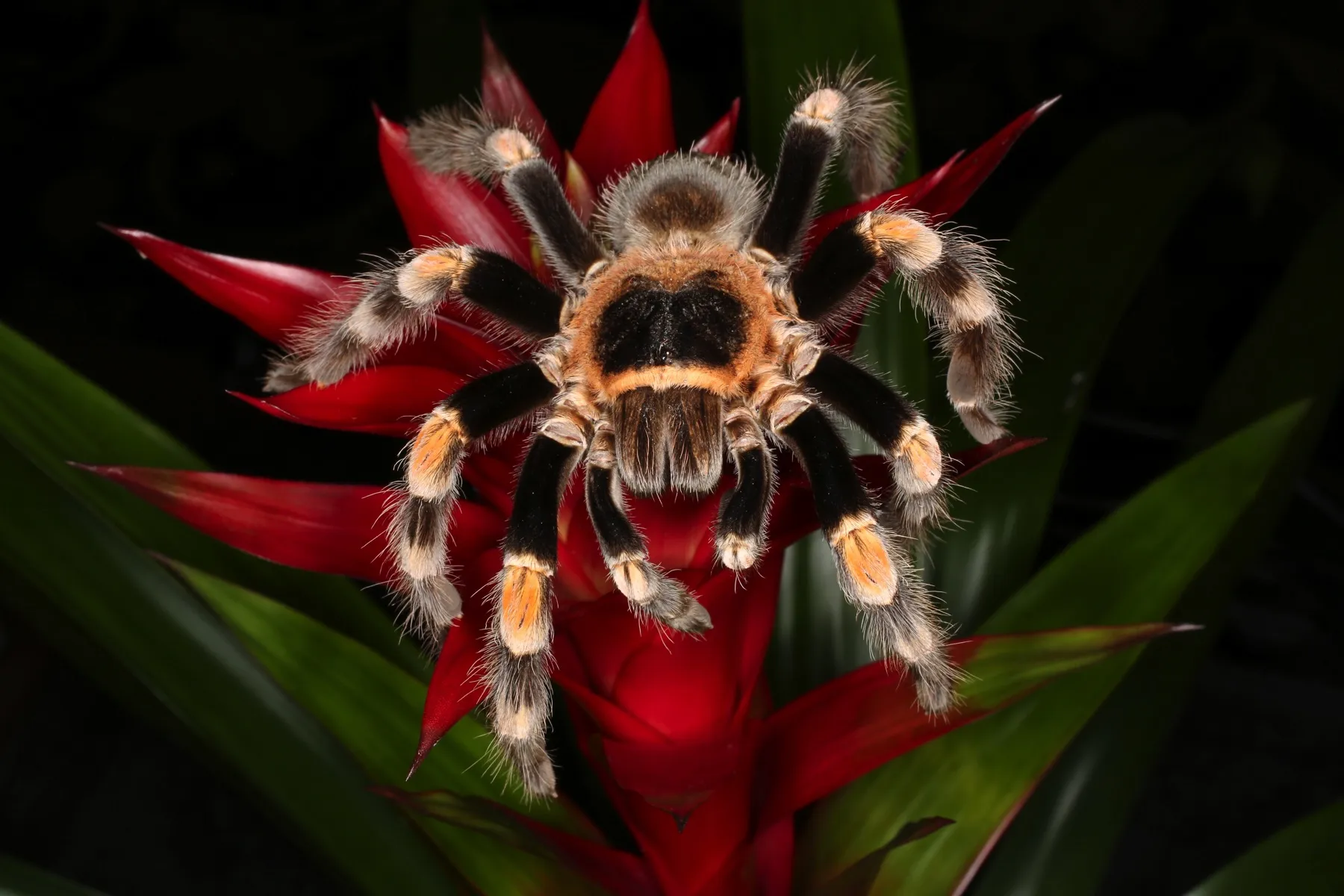
Clean, fresh water is essential for your Red Knee Tarantula’s health. A shallow water dish should be provided at all times and placed in a location where the tarantula can easily access it. The water dish should be shallow enough to prevent the tarantula from drowning but deep enough to provide adequate hydration. Regularly clean and refill the water dish to prevent the buildup of bacteria or algae. The dish should be cleaned frequently, typically every day or two, using warm water and a mild, unscented soap. Always rinse the dish thoroughly to remove any soap residue.
Maintaining Humidity
Maintaining the correct humidity level in your tarantula’s enclosure is also crucial for hydration. The Red Knee Tarantula requires a moderate humidity level, which can be achieved by misting the enclosure lightly with dechlorinated water a few times a week or by providing a water dish. The substrate, such as coconut fiber or peat moss, should be slightly moist, but not waterlogged. Use a hygrometer to monitor the humidity levels, and adjust the misting frequency as needed. Humidity is particularly important during the molting process, and it helps prevent the tarantula’s exoskeleton from drying out.
